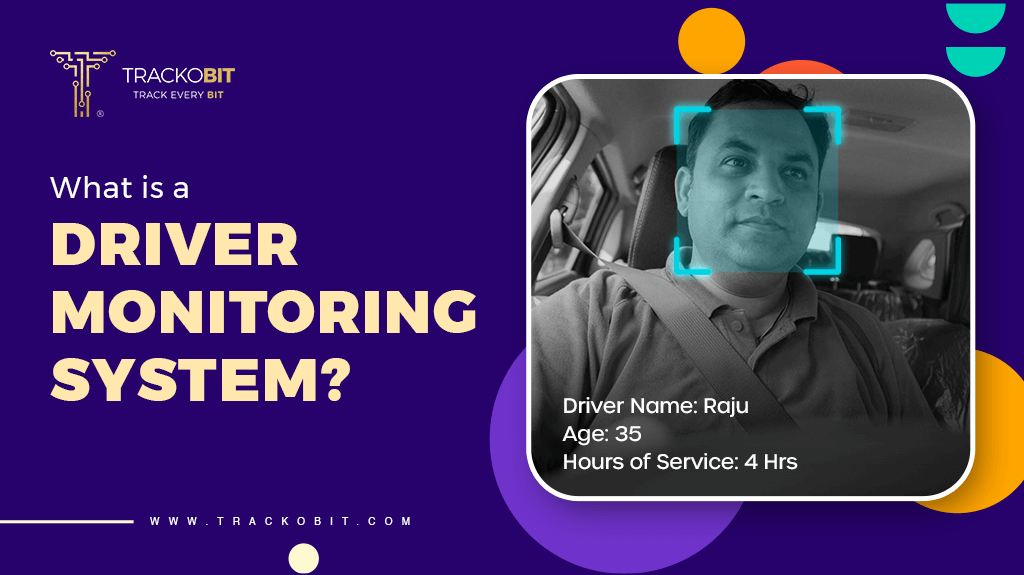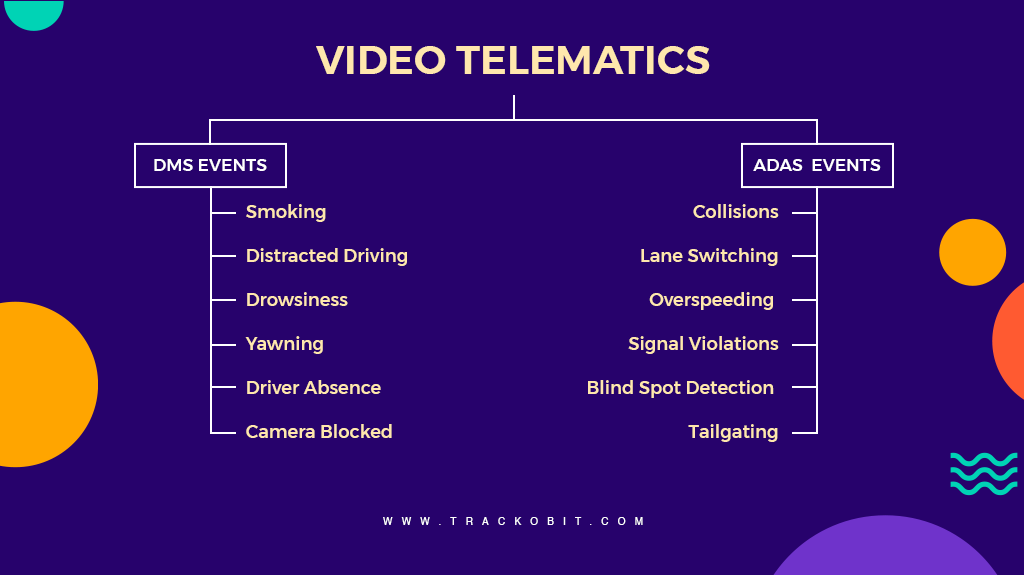-
TrackoBit
Manage commercial vehicles with the new-age Fleet Management Software
TrackoBit -
TrackoField
Streamline your scattered workforce with Field Force Management Software
TrackoField -
Features Resources
-
Blog
Carefully curated articles to update you on industrial trends. -
White Paper
Insightful papers and analysis on essential subject matters. -
Glossary
Explore an alphabetical list of relevant industry terms. -
What’s New
Get TrackoBit & TrackoField monthly updates here. -
Case Study
Explore the cases we solved with our diverse solutions. -
Comparisons
Compare platforms, features, and pricing to find your best fit.
-
About Us
Get to know TrackoBit: our team, ethos, values, and vision. -
Careers
Join the most dynamic cult of coders, creatives and changemakers. -
Tech Support
Learn about our technical support team and services in detail. -
Events
Check out the exhibitions where we left our marks and conquered. -
Contact Us
Connect with us and let us know how we can be of service.
What is a Driver Monitoring System & How Does it Work?
- Author:Anvesha Pandey
- Read Time:7 min
- Published:
- Last Update: August 22, 2024
Table of Contents
Toggle
Driver monitoring systems with fleet management software is a multi-faceted procedure to protect your fleet and drivers. Here’s the working of efficient driver monitoring systems.
Table of Contents
Toggle
Your fleet is like a finely tuned machine, and the drivers are the engine. But just like any other engine, you drivers too need careful monitoring to avoid breakdowns and ensure optimal performance.
To ensure your drivers are operating vehicles safely and soundly, you need software that can help keep surveillance over their in-cabin activities. Wondering which solution can let you know the in-cain activities of your driver? Well, that’s DMS aka driver monitoring systems. Driver monitoring systems act as a diagnostic tool that helps spot driving behavior that is risky and could possibly lead to traffic violations and accidents.
In this piece of writing, we’ll explore how these systems work and how they can benefit your fleet operations.
What is a Driver Monitoring System?
A driver monitoring system (DMS) is a safety feature in vehicles designed to monitor your driver’s behavior while driving. The system typically utilizes various sensors and cameras placed within the vehicle to track the eye movements of the driver, head position, facial expressions, and more indicators of attentiveness.
The technology helps detect signs of driver fatigue, drowsiness, and distraction. It issues alerts to the driver and triggers other safety interventions to mitigate accidents. The primary aim of the driver monitoring system is to promote driver awareness and reduce the risk of accidents caused by inattentiveness.
In simple words, DMS helps capture the in-cabin activities of the drivers, and whenever an event of inattentiveness or drowsiness takes place, the system shoots alerts. The same is continuously recorded via a dashcam and is visible to fleet managers in real-time.
Here are some of the common events that driver monitoring systems help detect:
- Facial Recognition
- Eye Tracking
- Drowsiness Detection
- Customizable Alerts
| Story Time!
The IPL season is all around the corner, Raju who is a fleet driver works for XYZ Logistics. This Sunday morning while driving, his eyes were glued to his phone. He was texting his friend about next week’s cricket match, his fingers were moving across the screen. A loud BEEP jolted him back to reality. He suddenly lost control of the truck and swerved to the curb. A small camera above the dashboard had detected his inattentiveness and unfocused gaze. The sudden ringing was a spontaneous warning for him to pay attention to the road again. Raju glanced at the steering and continued driving carefully. Wonder what if there was no beep, Raju could meet with an accident. All thanks to DMS that Raju brought back his attention and drove carefully. That is the power of this emerging technology, DMS. |
How Does a Driver Monitoring System Work?
Typically a driver monitoring system works through a combination of sensors, cameras, and advanced algorithms to monitor the driver’s behavior and his attentiveness. Let’s look into the working of DMS-
1. Installation of Sensors and Cameras
The DMS utilizes AI-powered sensors and cameras strategically placed within the vehicle to record and monitor the driver’s actions, body language, or facial features.
2. Data Collection
With the help of capacitive sensors and hyperspectral cameras, the data is continuously collected including eye movements, head position, facial expressions, and alerts of inattentiveness.
3. Analysis and Processing of Driver Behavior
The data is collected and processed in real-time or near-real-time by the onboard computer systems equipped with advanced algorithms. Moreover, the visual data collected by dashcams helps in detecting inefficient driving patterns and prevents mishappening by triggering an alert.
4. Detection of Drowsiness or Inattentive Driving
The algorithms are designed to detect signs that the driver is drowsy, tired, distracted, or anxious. This may include observing slow and uneven eye movements, unconscious prolonged blinking, changes in head position, or other behaviors that indicate the fatigue or inattentiveness of the driver.
5. Alerts and Warnings
In case the system detects that the driver’s attention is waning or if there is a risk of drowsiness or distraction, it issues alerts or warnings to prompt the driver to refocus on the road.
The overall goal of the driver monitoring system is to enhance road safety by promoting driver attentiveness. All in all, it reduces the risk of accidents caused by fatigue or distraction by providing real-time alerts.
Spot When Your Drivers are Drowsy or Distracted with TrackoBit’s Camera-based Driver Monitoring System

As we all know, the driver monitoring system is the heart and soul of video telematics. Video telematics is bifurcated into two branches – DMS & ADAS, where DMS stands for Driver Monitoring System and ADAS stands for Advanced Assistance Systems. DMS helps in capturing the in-cabin activities of the drivers and ADAS helps in monitoring the surrounding movements on the road.
The software understands behavioural patterns or events. Such events can be classified as smoking, yawning, being distracted, and more. The dashcams are smart enough to capture such events and shoot alerts accordingly.
ADAS takes it a step further by capturing the movements in the surrounding environment and issuing alerts when it detects an event. This technology comes in handy with insurance claim resolution, driver training, and enhancing safety measures.
How Big is the Market for Driver Monitoring Systems?
The market for driver monitoring systems has been experiencing significant growth in recent years, driven by various factors
1) Increasing Emphasis on Road Safety
As we all know accidents have been one of the major drawbacks of not equipping a DMS system. Government and regulatory bodies worldwide are placing greater emphasis on the safety of roads. By adopting technologies like DMS, a significant decline in accidents can be seen which often is caused by driver distraction, fatigue, and more cautious events.
🔎 According to a report released by the World Health Organization (WHO) in 2020, roughly 1.35 million people die each year as a result of accidents.
2) Rising Concerns About Distracted Driving
With the proliferation of smartphones and other digital devices, distracted driving has been a major concern. DMS helps mitigate this risk by monitoring driver attentiveness and issuing alerts when necessary.
3) Consumer Awareness and Demand
Increasing consumer awareness of the importance of road safety and the availability of advanced driver assistance systems (ADAS) like DMS are driving demand among vehicle users.
Overall, the market for Driver Monitoring Systems is expected to continue growing as automakers, regulatory bodies, and consumers increasingly prioritize safety on the roads. Market research reports suggest a robust growth trajectory for DMS in the coming years, with significant opportunities for telematics solutions manufacturers and service providers in this space.
|
🔎Let’s have a look into some statistics –
|
Driver Monitoring Systems and Driver Behavior Monitoring – What’s the Difference?
We all at some other point often get confused between driver monitoring systems and driver behavior monitoring. These two similar terms might sound similar but they are not. The table below describes how these two terms are different.
| Basis | Driver Monitoring Systems | Driver Behavior Monitoring |
|
|
|
|
|
|
|
|
|
Final Words
To wrap it all up, driver monitoring systems play a crucial role in keeping a constant eye on your driver’s in-cabin activities. The demands for driver monitoring continuously trend to grow in the coming times.
Estimates from various market research reports suggested that the global market size for driver monitoring systems was projected to reach several billion dollars by the mid-2020s. Factors such as the integration of DMS into advanced driver-assistance systems (ADAS), the rise of autonomous vehicles, and the increasing adoption of DMS in commercial vehicles were expected to drive this growth.
Well, do you want to know how carefully your drivers are driving your valuable fleet? If so, then get your hands on TrackoBit’s video telematics solutions to stay up-to-date with the actions of your drivers.
Want to know more?
Get in touch today!
Anvesha is a communication specialist at TrackoBit. With a strong background in media and communications, she adds much-needed balance and brevity to TrackoBit’s... Read More
Related Blogs
-

When Tracking Needs a Clock: Rethinking Fleet Visibility
Tithi Agarwal December 24, 2025Read on to understand why fleet tracking works better when it follows working hours. Because visibility should support operations, not…
-

What Makes TrackoBit’s Video Telematics Software Truly Next-Gen?
Shemanti Ghosh December 17, 2025TrackoBit’s video telematics software blends smart video intelligence with full server control. The result? Superior fleet reliability and safety.
-

Plug, Pair, Perform TrackoBit Introduces BLE Sensor Integration
Tithi Agarwal November 26, 2025TrackoBit’s BLE Sensor Integration enables wireless, real-time monitoring with faster installs and accurate insights. It improves fleet efficiency, visibility, and…
-

How to Use Driver Behavior Reports as a Sales Hook to Close Big Fleets
Tithi Agarwal October 16, 2025TrackoBit’s driver behavior reports empower fleet providers to win big contracts by showcasing safety, efficiency, and measurable ROI.

Subscribe for weekly tips to optimize your fleet’s potential!
Your inbox awaits a welcome email. Stay tuned for the latest blog updates & expert insights.
"While you're here, dive into some more reads or grab quick bites from our social platforms!"Stay Updated on tech, telematics and mobility. Don't miss out on the latest in the industry.
We use cookies to enhance and personalize your browsing experience. By continuing to use our website, you agree to our Privacy Policy.


































